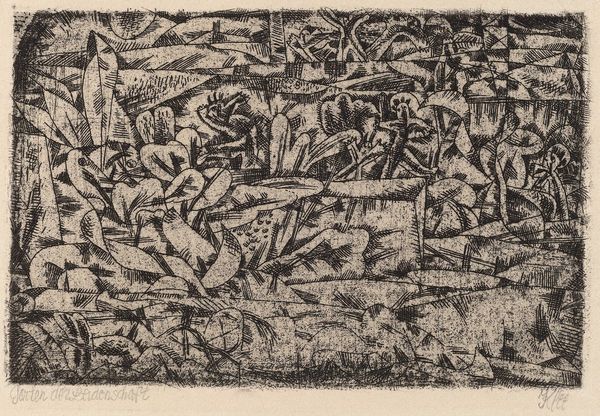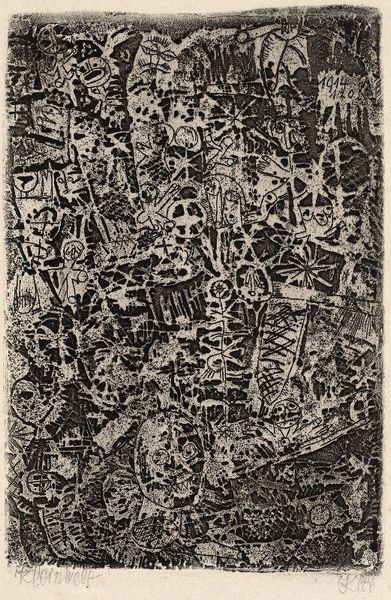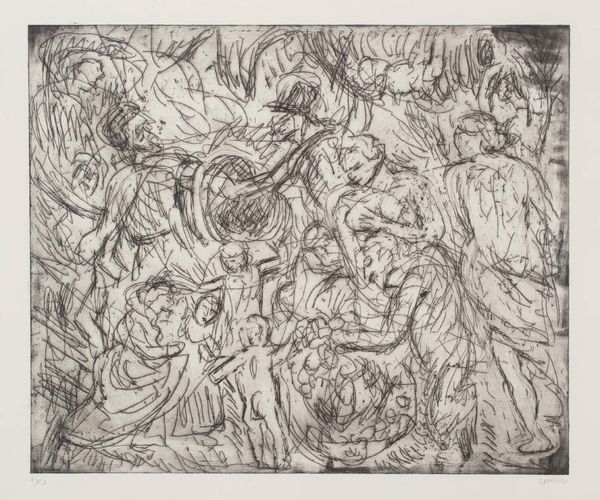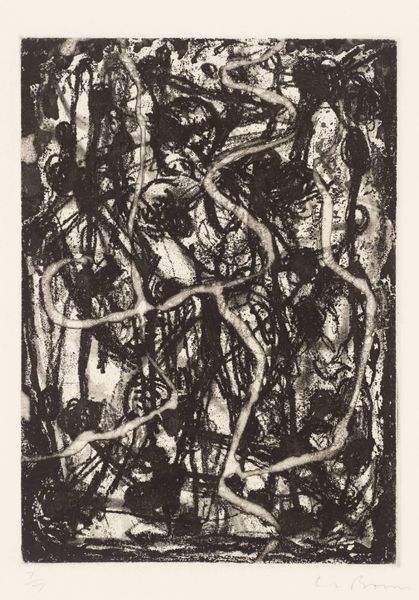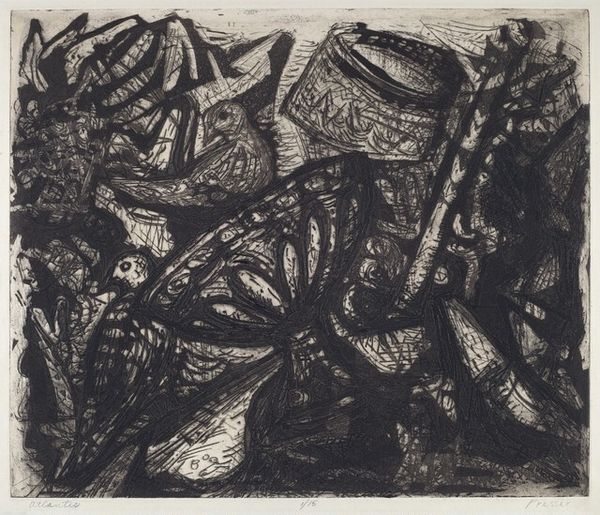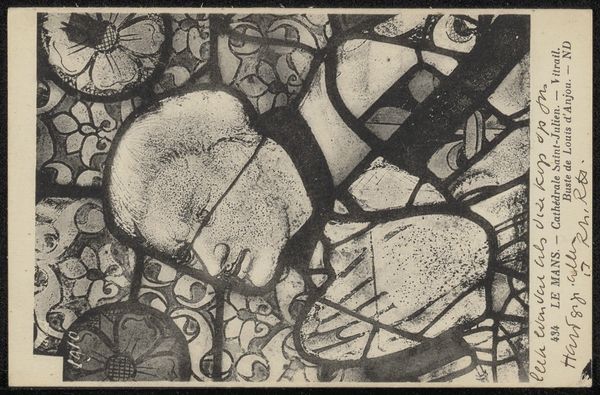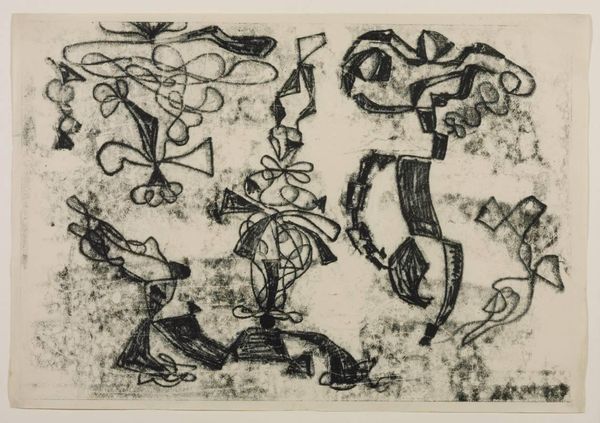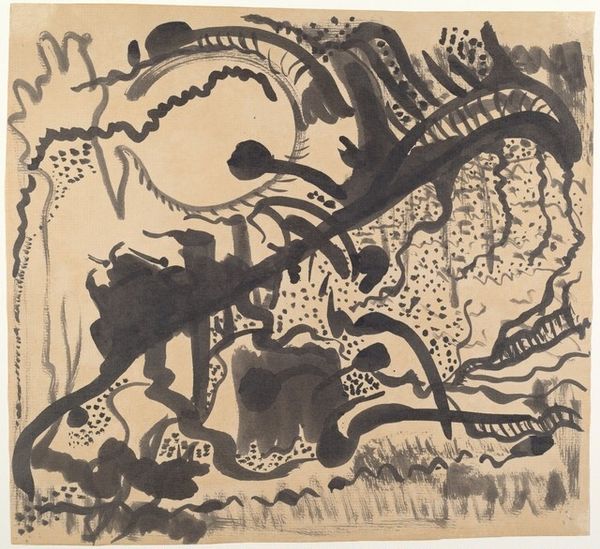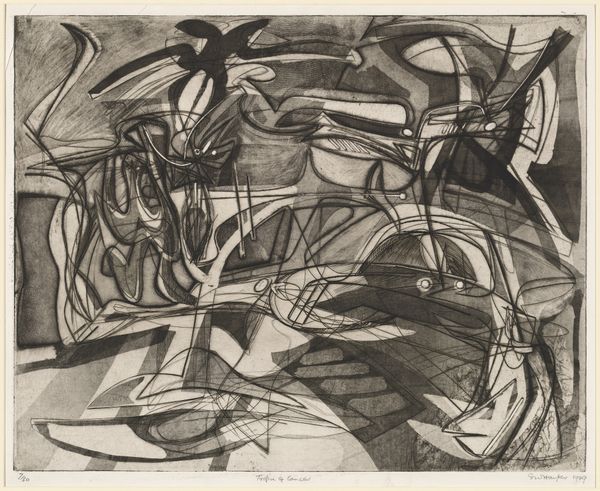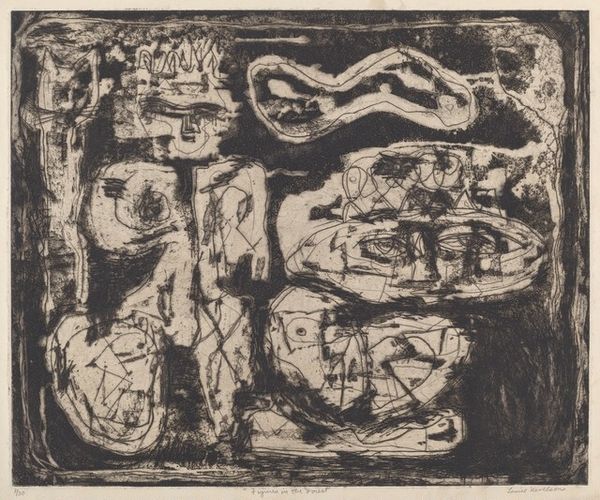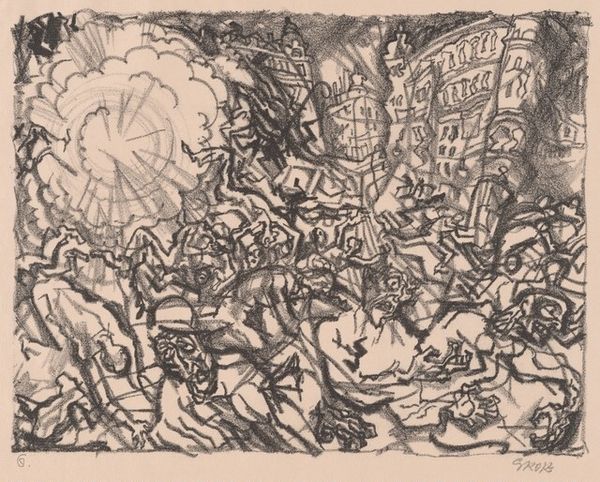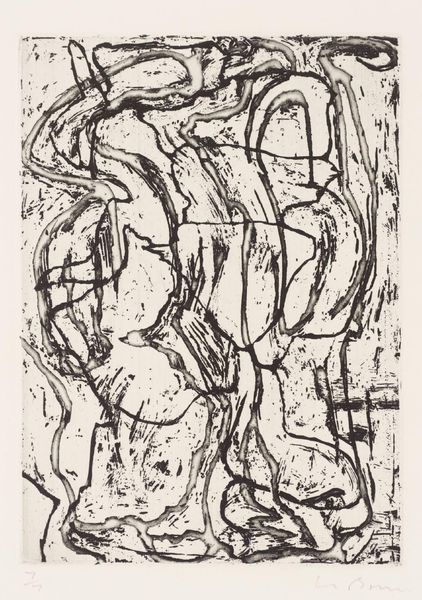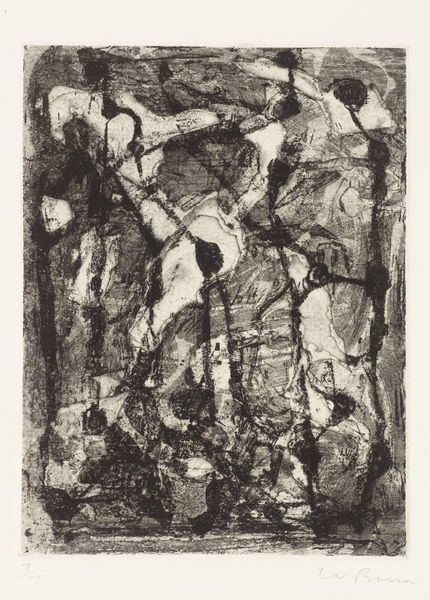
#
abstract-expressionism
# print
#
abstraction
#
line
Dimensions: image: 55.88 × 71.12 cm (22 × 28 in.) sheet: 61.91 × 76.84 cm (24 3/8 × 30 1/4 in.)
Copyright: National Gallery of Art: CC0 1.0
Editor: We’re looking at Glen Alps’ "Space Tensions" from 1956, a print from the museum’s collection. There are so many lines crisscrossing each other, it’s chaotic, almost stressful to look at. What do you make of this density? Curator: I see it as a reflection of its time. The mid-20th century was a period of enormous social and political upheaval. Abstract Expressionism, as seen here, became a powerful visual language to express anxieties about the human condition. Alps' layered lines can be interpreted as representing the complexity and instability of the postwar world. How does the title “Space Tensions” strike you in this context? Editor: Well, I immediately think about the Cold War tensions and the threat of nuclear war that hung over everything. I guess I see that fear of the unknown represented in those harsh, clashing shapes. But doesn't all Abstract Expressionism have some sense of postwar dread to it? Curator: It's a prevalent reading, yes. The "tensions" in the title, however, can also be viewed in relation to artistic conventions. Abstract Expressionism sought to break free from established aesthetic norms. So, perhaps, Alps is also dealing with his personal artistic struggles, wrestling with how to create something meaningful in a world undergoing rapid change, or even to represent something on the flat picture plane. Notice the lack of a focal point. Do you think that lack is purposeful? Editor: I see what you mean. I didn't think about that aspect. It’s like there is no anchor, which feeds that feeling of uneasiness. I always thought Abstract Expressionism was about personal expression, so I am intrigued to hear that you consider the context of socio-political issues and institutional power as relevant and intertwined with the art. Curator: It's about both. The personal and the political are not mutually exclusive, especially in art that aims to capture the zeitgeist. We often underestimate the extent to which artistic freedom is contingent on patronage systems, government policies, and museum collecting habits. This work would not exist without the confluence of these elements. Editor: I'll never look at Abstract Expressionism the same way again. It's amazing how much context changes my perspective. Curator: Exactly. Understanding that interplay between artist, artwork, and the world it inhabits is key to appreciating art's profound impact.
Comments
No comments
Be the first to comment and join the conversation on the ultimate creative platform.
